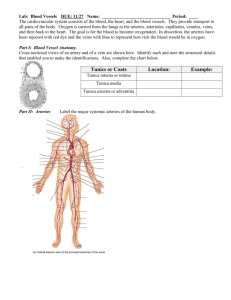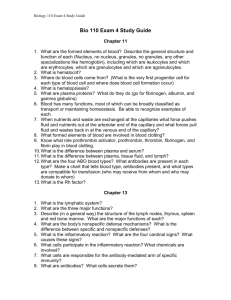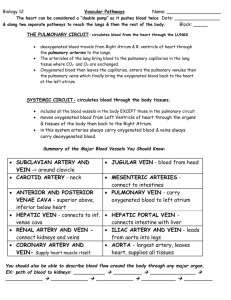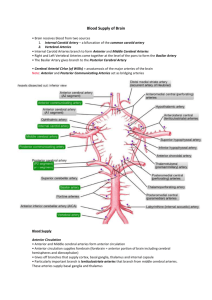Chapter 1 Answer Key
advertisement
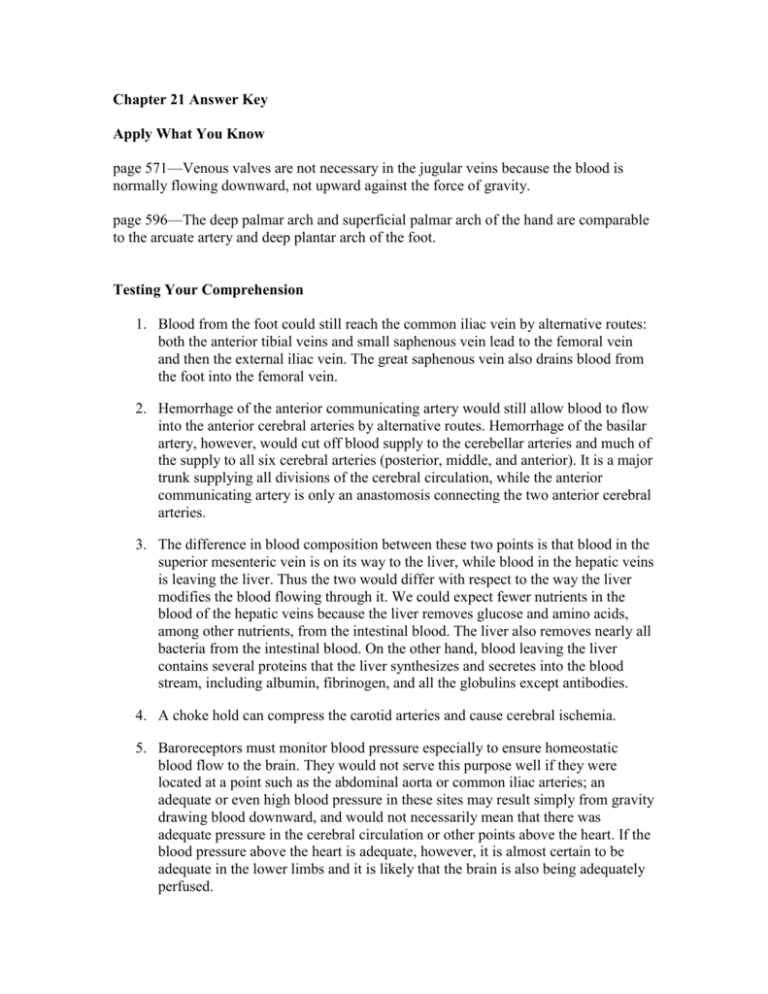
Chapter 21 Answer Key Apply What You Know page 571—Venous valves are not necessary in the jugular veins because the blood is normally flowing downward, not upward against the force of gravity. page 596—The deep palmar arch and superficial palmar arch of the hand are comparable to the arcuate artery and deep plantar arch of the foot. Testing Your Comprehension 1. Blood from the foot could still reach the common iliac vein by alternative routes: both the anterior tibial veins and small saphenous vein lead to the femoral vein and then the external iliac vein. The great saphenous vein also drains blood from the foot into the femoral vein. 2. Hemorrhage of the anterior communicating artery would still allow blood to flow into the anterior cerebral arteries by alternative routes. Hemorrhage of the basilar artery, however, would cut off blood supply to the cerebellar arteries and much of the supply to all six cerebral arteries (posterior, middle, and anterior). It is a major trunk supplying all divisions of the cerebral circulation, while the anterior communicating artery is only an anastomosis connecting the two anterior cerebral arteries. 3. The difference in blood composition between these two points is that blood in the superior mesenteric vein is on its way to the liver, while blood in the hepatic veins is leaving the liver. Thus the two would differ with respect to the way the liver modifies the blood flowing through it. We could expect fewer nutrients in the blood of the hepatic veins because the liver removes glucose and amino acids, among other nutrients, from the intestinal blood. The liver also removes nearly all bacteria from the intestinal blood. On the other hand, blood leaving the liver contains several proteins that the liver synthesizes and secretes into the blood stream, including albumin, fibrinogen, and all the globulins except antibodies. 4. A choke hold can compress the carotid arteries and cause cerebral ischemia. 5. Baroreceptors must monitor blood pressure especially to ensure homeostatic blood flow to the brain. They would not serve this purpose well if they were located at a point such as the abdominal aorta or common iliac arteries; an adequate or even high blood pressure in these sites may result simply from gravity drawing blood downward, and would not necessarily mean that there was adequate pressure in the cerebral circulation or other points above the heart. If the blood pressure above the heart is adequate, however, it is almost certain to be adequate in the lower limbs and it is likely that the brain is also being adequately perfused.

